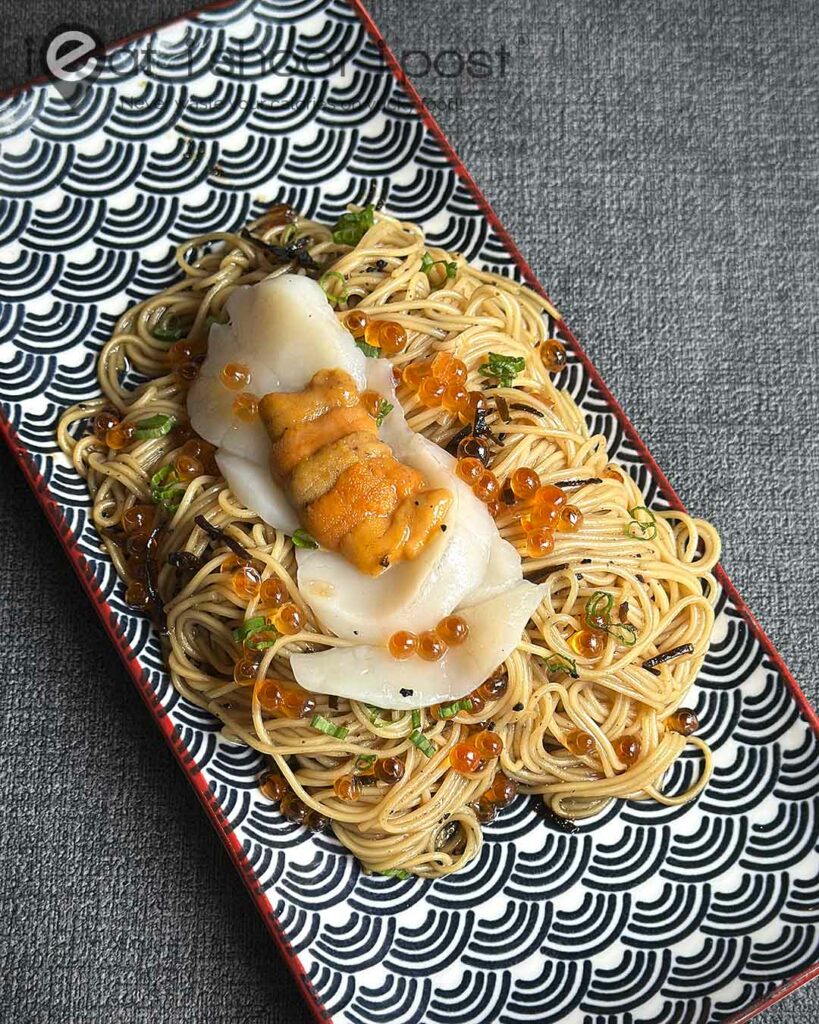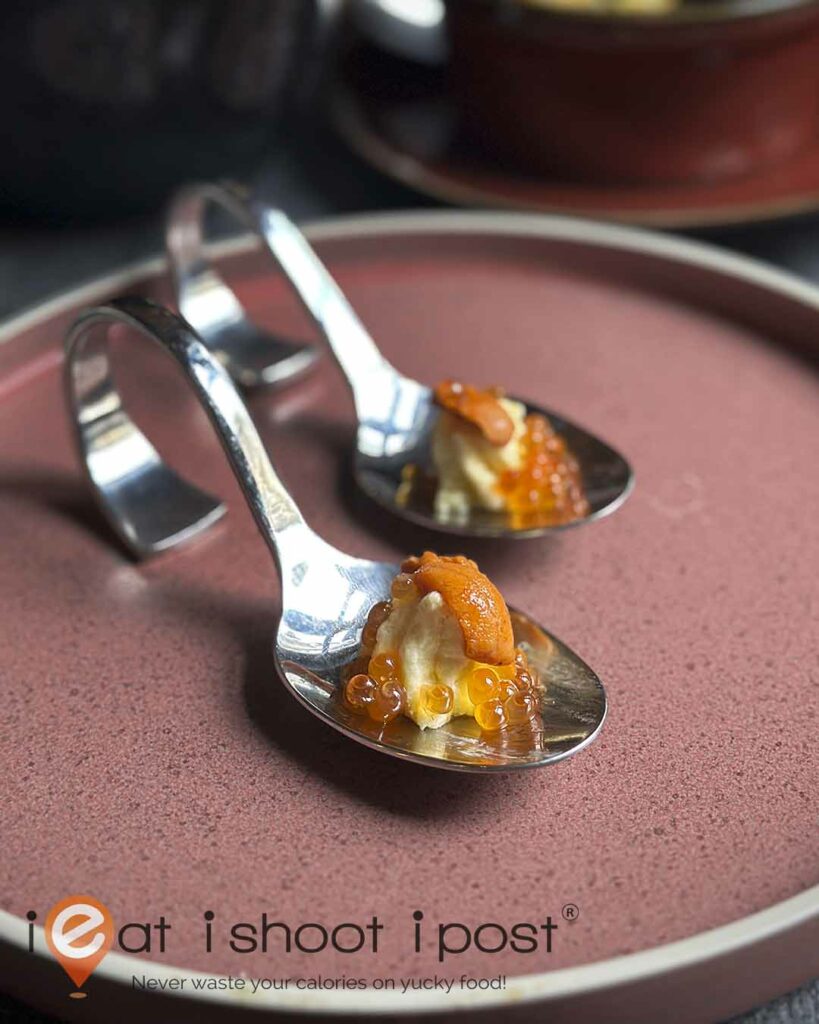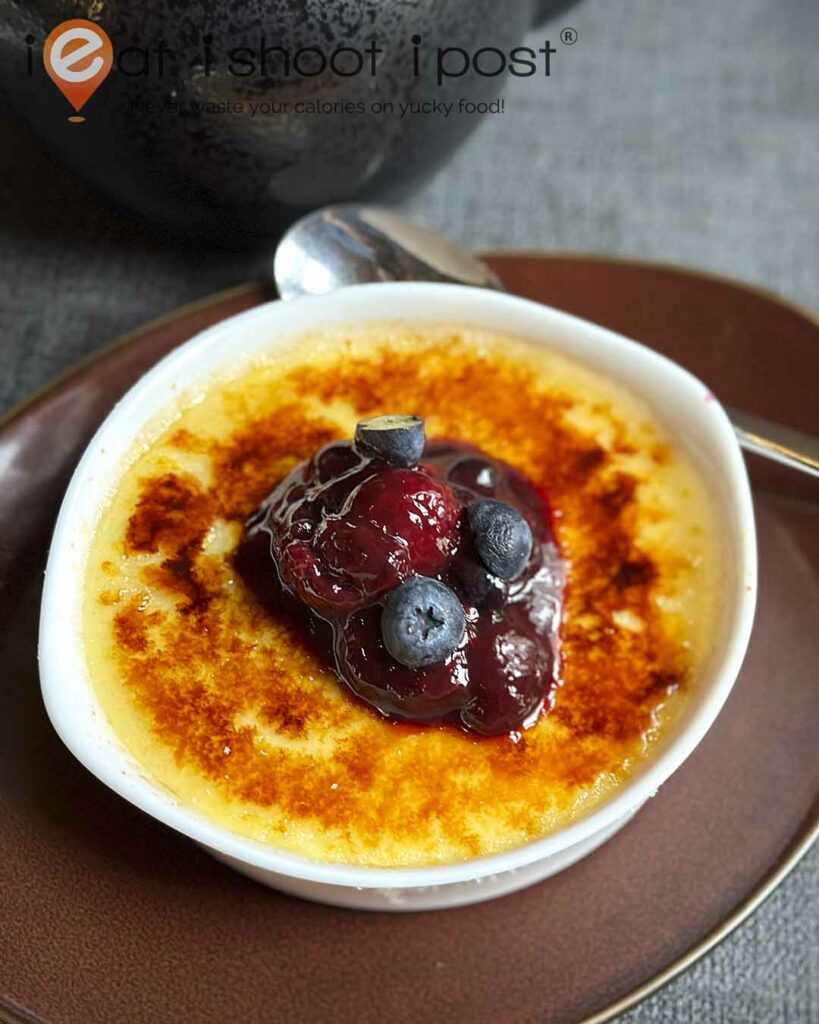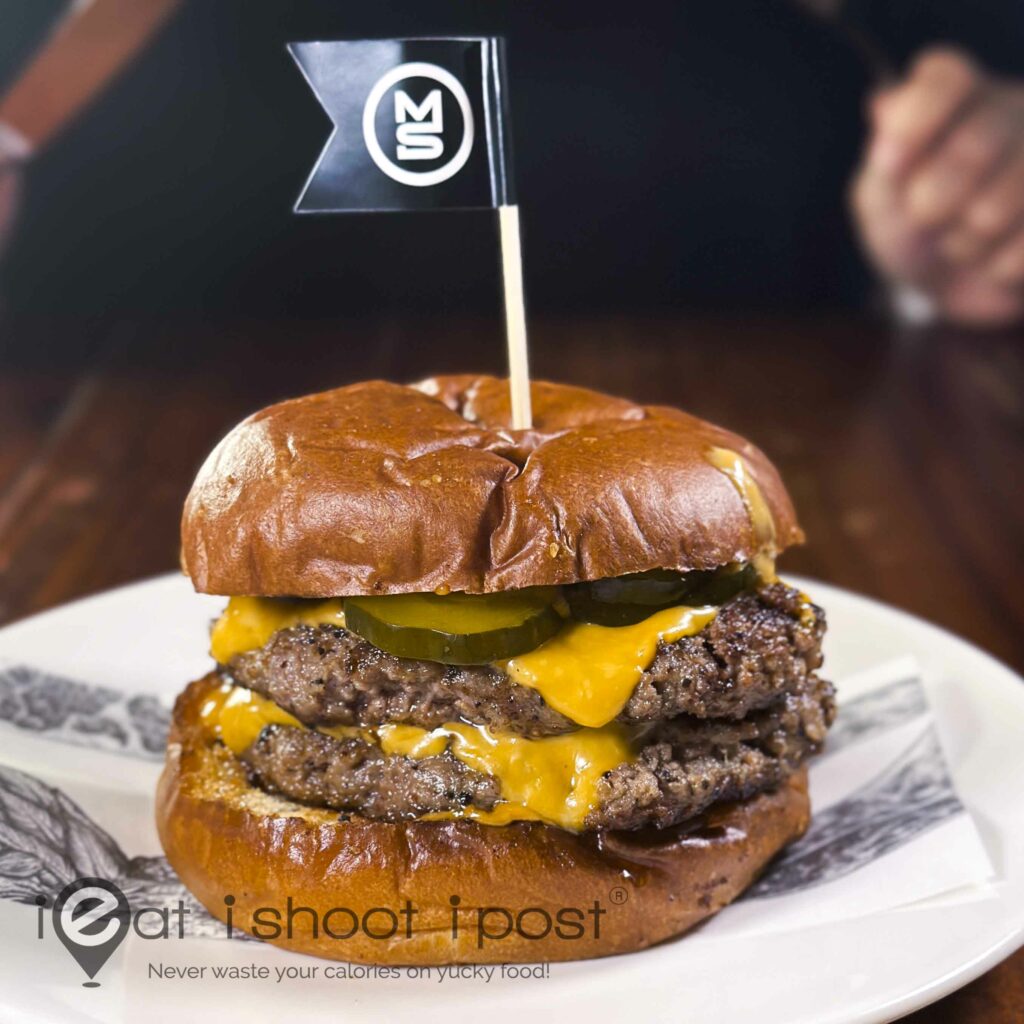
It’s been a year since we last featured Wagyu X, and they remain the only steakhouse in town serving Japanese F1 Wagyu-Angus steaks. Yet, many people are still unaware of this unique breed of beef. To showcase its exceptional quality, the owners embarked on a rigorous steak-tasting journey, sampling Singapore’s most popular steaks and shortlisting the top contenders.
They’ve now created a special steak platter, featuring these favourites alongside their signature Wagyu X steak. Once you taste them side by side, they’re confident you’ll be captivated by the flavor and texture of Wagyu X!

Their Wagyu X Major Sirloin platter features five sirloin (striploin) cuts priced at $370: Japanese Wagyu A5 Kyoto Hirai (160g) USDA Prime from MaClaren Farm Angus (300g), Australian Stockyard F1 Wagyu (250g) Wagyu X (250g) and Wagyu X (Wet Aged) (250g).
While it was quite easy to tell the two Wagyu X steaks, it was not so easy to tell if it was aged or not. One of the reasons could be that it is wet aged, not dry aged and this batch of beef wasn’t aged very long.
The Wagyu X Major Platter (Sirloins) has 1.21kg of beef and is good for three to five pax.
If you are dining with a partner, you can also choose to try their smaller platter (Wagyu X Origins Platter $180) where you are presented with three cuts of beef – Japanese Wagyu A5 Kyoto Hirai (80g) USDA Prime from MaClaren Farm Angus (300g) and Wagyu X (250g).
Sides Promo: Until 28 Feb 2025
Enjoy a complimentary Beef Tallow Fries when you order a Wagyu X Origins Platter $180. Or get both the Beef Tallow Fries and Spinach Salad when you order a Wagyu X Major Platter $370.
APPETIZERS

They have also introduced some new sides like the somen with ikura, hotate and truffle oil.

They also have a roasted Japanese pumpkin with walnuts and cheese which is very nice.
Original Article published in Dec 2023:

The Latest Steak in Town
My fellow Steakmeisters! There is a new steak in town!
Behold the Japanese Wagyu Angus F1 cross from Hokkaido, which has made its debut in Singapore at Wagyu X.
Those of you who have been tracking the development of Wagyu would be familiar with the Wagyu F1 cross. When Wagyu steaks first appeared in Singapore in 2006, they were from crossbred Wagyu cattle from Australia. In those days, they imported a Wagyu bull from Japan and crossbred it with Angus cows to produce first-generation cattle with 50% Wagyu genetics. This is what is termed an F1 cross. The steaks were highly marbled but not quite as marbled as full-blood Wagyu from Japan. Those were the bad old days when you had to travel to Japan to experience an A5 Wagyu steak.
Japanese A5 Wagyu more suitable for Shabu Shabu
Japanese Wagyu made its appearance in Singapore in 2009, and we finally got to taste an A5 Wagyu steak. The first experience was nothing short of exhilarating. Those of us who have been familiar with USDA and Australian steaks are blown away by the incredible tenderness and juiciness of Japanese Wagyu. However, over time, we begin to realize that A5 Wagyu is a little too rich to be eaten as a steak. It is great for Shabu Shabu or yakiniku where you might take 200g of meat, but it is a little too much if you want to enjoy a 500g steak.
For a satisfying steak experience, an A3 wagyu would provide a better balance of tenderness, juiciness, and a good meaty bite. In 2018, Bizen introduced to us the Japanese Wagyu-Holstein cross which is a cross between a Wagyu bull and Holstein cows. Holsteins are bred for milk production, so cross-breeding the Wagyu with Holstein not only produces cattle for beef, but the cows can then go on to produce milk! The steaks have a marbling that is similar to an A3 Wagyu and prices are more competitive.

Japanese Angus-Wagyu Cross
Now, thanks to Chef-owner Masahisa Takada, we get to taste the Japanese Angus-Wagyu cross. Chef Masahisa first tasted the beef when he made a trip back to his hometown in the Chiba prefecture before the pandemic. He was so enamored by the beef that he spent the next four years tracking down the source and then identifying a supplier who would be able to export to Singapore. According to Wagyu X, the beef is a cross between a Kuroge Black Wagyu Cow and an Aberdeen Angus Bull. This is quite an unusual cross because unlike Holsteins, which are already being raised in Japan, there are no Angus cattle being bred in Japan. So, what the farmers must have done was to import an Angus Bull to inseminate their herd of Wagyu cows. This would be the opposite of what had been done in Australia and America where a Tajima Bull was imported to cross-breed with Angus cows.
So sorry to have to bore you with all that technical stuff. But, the background information is required in order for the beef enthusiast to answer two important questions:
- Does the Wagyu Angus cross make for a better steak experience?
- Does the Japanese Angus-Wagyu cross taste different from the Australian/US Wagyu-Angus cross?

What’s on the Steak Menu
Wagyu X currently serves three cuts of the Japanese Angus-Wagyu Cross, viz Striploin, Ribeye, and Tenderloin and they come in 500g/1kg servings for Striploin and Ribeye and 250g/500g serving for tenderloin. I was quite surprised that the Striploin costs $160 for a 500g steak while the Ribeye costs $125. These two prime cuts usually cost around the same price, so the Ribeye seems like a better deal on paper. There are some differences between the two cuts to note. Firstly, since the striploin has a smaller surface area, the 500g steak is around 3-3.5cm thick while the Ribeye is only around 2cm thick. I felt the 3cm thick steak had a better bite, texture, and juiciness. However, I usually enjoy Ribeye because of the Ribeye Cap (spinalis dorsi) which is one of the tastiest and tender parts of the whole carcass. What would be perfect would be an 800g Ribeye steak that is 3cm thick!
Our Verdict
We thoroughly enjoyed the flavor and tenderness of the Japanese Angus-Wagyu cross. It boasts a beefier flavor than Wagyu, and the marbling is still amazing without being overly rich, allowing you to relish 400g of meat without feeling too queasy. It has more bite than Wagyu, which I find enjoyable, though Lisa did find some parts a tad chewy.
It becomes a little trickier when compared to Australian Wagyu, which is also a Wagyu-Angus cross. In general, there is a difference in the way the cattle are raised in Japan as compared to Australia and this does translate to a difference in the texture and flavour of the meat. In Japan, the cattle are housed in sheltered open-air barns while in Australia they roam in open areas and the feed and quality of water are different. Given the multitude of Wagyu farmers in Australia, the quality also varies between different farms. Given that Japanese beef is usually more expensive than Australian beef, $125 is a very reasonable price for a 500g Ribeye steak.
At Wagyu X, the steaks are seared and finished on stainless steel pans. They skillfully cook the steak, creating a nice crust on the outside while maintaining a perfectly medium-rare interior. However, we did miss that smoky flavor that comes from grilling the meat over charcoal. The steaks are simply seasoned with salt and served with a choice of Japanese steak sauce or wasabi. It’s a very satisfying steak experience that no steak lover should want to miss. 4.5/5

They keep the side dishes simple at Wagyu X. We enjoyed the asparagus which was charred and served with a beanaise sauce. The matsutake shoe string fries were a little disappointing. I felt that they could have served better quality steak fries and the matsutake flavoring didn’t do much for the fries. The Japanese corn was a little overcooked such that the kernels were slightly shrunken instead of being plump and juicy and the roasted pumpkin could have been more caramelised. In general, I felt the sides didn’t quite do justice to the excellent steaks. 3.5/5

We did have some very nice starters though. The Hokkaido scallops with capsicum sauce were quite tasty and reflected Chef Masa’s expertise in Italian cuisine. 4/5

I also enjoyed the corn mousse with ikura and uni. At $30 for 3 spoons, they are not cheap but they are a very tasty starter. 4/5

For dessert, we enjoyed the creme brûlée with berries compote. The tartness of the berries added a nice contrast to the rich custard. 4.25/5

The setting is casual in keeping with the whole concept of the place. It’s a restaurant where you go to enjoy a really good Wagyu steak without having to pay for all the niceties like white tablecloths, fancy steak knives, and wait-staff in penguin suits.

Conclusion
The newest Japanese steakhouse in Singapore offers a delicious Japanese Angus-Wagyu steak experience at an attractive price. While the side dishes may not be exceptional, they shouldn’t deter serious steak connoisseurs looking for the next conquest to add to their steak log.
Disclosure: This was a media tasting. Opinions expressed are that of our own.











